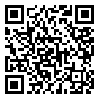Volume 22, Issue 84 (4-2022)
refahj 2022, 22(84): 335-362 |
Back to browse issues page
Download citation:
BibTeX | RIS | EndNote | Medlars | ProCite | Reference Manager | RefWorks
Send citation to:



BibTeX | RIS | EndNote | Medlars | ProCite | Reference Manager | RefWorks
Send citation to:
Baharloee S, dehghani A, Salehi R. (2022). Comparison of Clinical Profile and Career Profile of Job Seekers and Waiting for Job Centers. refahj. 22(84), : 11
URL: http://refahj.uswr.ac.ir/article-1-3565-en.html
URL: http://refahj.uswr.ac.ir/article-1-3565-en.html
Abstract: (3927 Views)
The challenges of modern life and human nature encourage the need to earn a living and move toward materialism, in which direction jobs are the most important means of achieving this. Therefore, the purpose of the present study was to compare the clinical profile (aggression, anxiety, obsession, individual sensitivity, somatic complaints, psychosis, paranoid imagery, depression, and fear) and to compare career path profiles (behavior, self-efficacy, belief and adaptability in job seekers and job seekers were waiting. The research method was causal-comparative. For this purpose, all job seekers registered in Najaf Abad employment centers in 1397 were considered as a community. Of these, 110 were recruited by 52 job seekers and 58 were expected by available sampling and were divided into two groups of job seekers and job seekers. Research tools included Job Path Adaptation Questionnaire (Savikas & Porfili, 2012), 20 Questions about Job Behavior (Salehi, 2005); 10 Questions about Job Behavior (Salehi, 2005); Job Beliefs Test (Salehi, 2005) and SCL-90 (Dargoyess et al., 1973). Data were analyzed using multivariate analysis of covariance and SPSS-22 software. The results showed that there was a significant difference between the two dimensions of career path in behavioral attribute and in the belief dimension (P <0.05) and there was no significant difference between self-efficacy, adaptability and job satisfaction (P <0.05). / 0
Article number: 11
Type of Study: orginal |
Received: 2020/01/23 | Accepted: 2021/10/20 | Published: 2022/05/13
Received: 2020/01/23 | Accepted: 2021/10/20 | Published: 2022/05/13
Send email to the article author
| Rights and permissions | |
 |
This work is licensed under a Creative Commons Attribution-NonCommercial 4.0 International License. |







